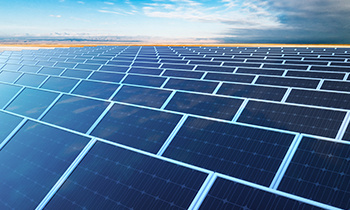Photovoltaic Equipment Industry Research and 2022 Annual Strategy: Fully Embrace New Technologies
[Summary Description] The technology is still in its infancy, and investment returns are difficult to predict. Once reserve projects are launched, they will inevitably drive new investment. Compared with inland projects, the investment in marine photovoltaic power generation is indeed high. Due to the lack of mature project cases, the investment return of marine photovoltaic power generation is still unclear at this stage.
Analysis of the Investment Framework for Photovoltaic Equipment
1. Photovoltaic Equipment Analysis
Photovoltaic equipment includes four major categories: silicon material equipment, silicon wafer equipment, cell equipment, and component equipment.
2. Investment Framework for Photovoltaic Equipment
Investment Logic for Photovoltaic Equipment ①: The second-order derivative of terminal demand. The demand for photovoltaic equipment is closely related to the global photovoltaic installation capacity. This relationship is: the difference between the global photovoltaic installation capacity in year t and the global photovoltaic installation capacity in year t-1 is the global newly installed photovoltaic capacity in year t, and the difference between the global newly installed photovoltaic capacity in year t and the global newly installed photovoltaic capacity in year t-1 is the demand for incremental photovoltaic production capacity. Based on this second-order derivative relationship, from the perspective of downstream photovoltaic installation capacity alone, the demand for photovoltaic equipment is smoother, and the former mainly provides long-term development space for the latter.
3. 2020-2021: Review and Outlook of the Photovoltaic Equipment Market
2020-2021 was a significant year for photovoltaic equipment. Reviewing the photovoltaic equipment market since 2020, 2020 saw a surge in the second-order derivative demand for battery cells (Tongwei, Longi's battery expansion), while 2021 saw a surge in the second-order derivative demand for silicon wafers (new players expanding silicon wafer production), thus driving the performance improvement of photovoltaic equipment companies, and also leading to an increase in the valuation of photovoltaic equipment companies due to the implementation of new technologies such as large Size, HJT, and TOPCon.
Due to rising upstream raw material prices and energy costs, new technological changes began to appear in various segments of the photovoltaic industry in 2021. The core contradiction behind this is that cost reduction in the existing industrial chain has reached its bottleneck. Judging from the rise and fall of photovoltaic equipment stocks and the underlying logic, silicon wafer equipment benefits from the second-order derivative of terminal demand, while battery equipment mainly benefits from the update demand driven by technological iteration. (Shuangliang Energy mainly follows the logic from equipment to silicon wafers).
The impact of the second-order derivative of downstream demand is weakening.
1. Demand Side: The newly installed photovoltaic capacity in 2022 is expected to reach 210GW.
2. Supply Side: 2022 production capacity analysis for each segment.
3. Supply and Demand Comparison: The second-order derivative demand for battery cells is most obvious in 2022.
1. Principle and process introduction
2. Carbon footprint is a highlight of progress; fully embracing new technologies
Previous: Core Views on Photovoltaic Silver Paste
Next: Dive in, photovoltaic industry!
RELATED INFORMATION
The 392.4 kW grid-connected power generation project at the PetroChina Guangdong Zengcheng Fenggang gas station by Meijidian Energy Photovoltaic has been successfully completed.
On the morning of May 30, a group of four from the Zengcheng Power Supply Bureau of the Southern Power Grid arrived at the Fenggang Sinopec gas station to connect the photovoltaic power generation system to the grid. After two hours of orderly work by the power supply bureau and photovoltaic installation technicians, the original power line was removed and the photovoltaic power line was connected. The photovoltaic meter began to show readings, marking the successful grid connection of the power station for self-generation and surplus power transmission to the grid. It is expected to generate 76125.6 kWh of electricity annually, saving 18.3 tons of standard coal and reducing carbon dioxide emissions by 47.66 tons and sulfur dioxide emissions by 1.18 tons.
General Manager Zhang, Vice Chairman and Chief Economist of CGN Group, and Wu Shaohua, Secretary of the Party Committee of China Railway Group Limited, visited Meji Electric Energy Company to guide its work!
On the morning of May 9th, Mr. Zhang, Vice Chairman and Chief Economist of CGN Group, Mr. Wu Shaohua, Party Secretary of China Railway Group Limited, and Mr. Xiao, Chairman of Meijidian Energy Photovoltaic New Energy Investment, visited our company for guidance.
Li Keqiang: Promote the construction of large-scale wind and photovoltaic bases, and exclude renewable energy and raw material energy consumption from the total energy consumption control.
The fifth session of the 13th National People's Congress (NPC) opened at the Great Hall of the People at 9 a.m. on Saturday, March 5, 2022. Premier Li Keqiang delivered the Government Work Report on behalf of the State Council to the fifth session of the 13th NPC.
Support coal, oil and gas companies in building photovoltaic power plants to promote the accelerated development of new energy from multiple perspectives
Develop new energy, distributed energy, and new energy storage














